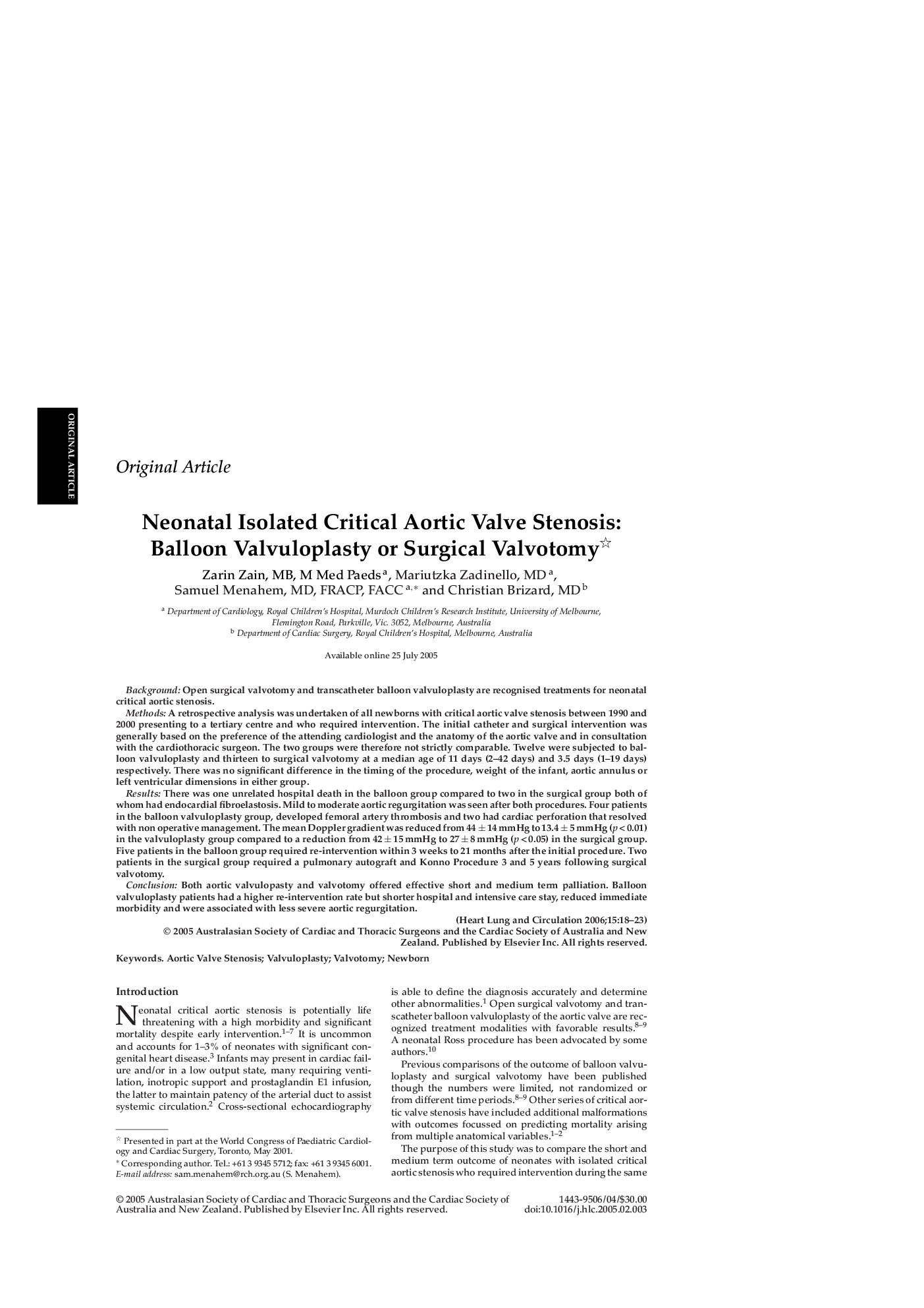| Article ID | Journal | Published Year | Pages | File Type |
|---|---|---|---|---|
| 2921504 | Heart, Lung and Circulation | 2006 | 6 Pages |
BackgroundOpen surgical valvotomy and transcatheter balloon valvuloplasty are recognised treatments for neonatal critical aortic stenosis.MethodsA retrospective analysis was undertaken of all newborns with critical aortic valve stenosis between 1990 and 2000 presenting to a tertiary centre and who required intervention. The initial catheter and surgical intervention was generally based on the preference of the attending cardiologist and the anatomy of the aortic valve and in consultation with the cardiothoracic surgeon. The two groups were therefore not strictly comparable. Twelve were subjected to balloon valvuloplasty and thirteen to surgical valvotomy at a median age of 11 days (2–42 days) and 3.5 days (1–19 days) respectively. There was no significant difference in the timing of the procedure, weight of the infant, aortic annulus or left ventricular dimensions in either group.ResultsThere was one unrelated hospital death in the balloon group compared to two in the surgical group both of whom had endocardial fibroelastosis. Mild to moderate aortic regurgitation was seen after both procedures. Four patients in the balloon valvuloplasty group, developed femoral artery thrombosis and two had cardiac perforation that resolved with non operative management. The mean Doppler gradient was reduced from 44 ± 14 mmHg to 13.4 ± 5 mmHg (p < 0.01) in the valvuloplasty group compared to a reduction from 42 ± 15 mmHg to 27 ± 8 mmHg (p < 0.05) in the surgical group. Five patients in the balloon group required re-intervention within 3 weeks to 21 months after the initial procedure. Two patients in the surgical group required a pulmonary autograft and Konno Procedure 3 and 5 years following surgical valvotomy.ConclusionBoth aortic valvulopasty and valvotomy offered effective short and medium term palliation. Balloon valvuloplasty patients had a higher re-intervention rate but shorter hospital and intensive care stay, reduced immediate morbidity and were associated with less severe aortic regurgitation.
